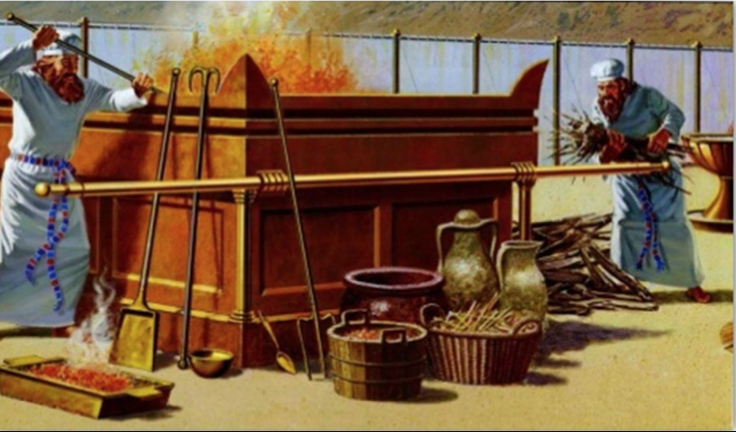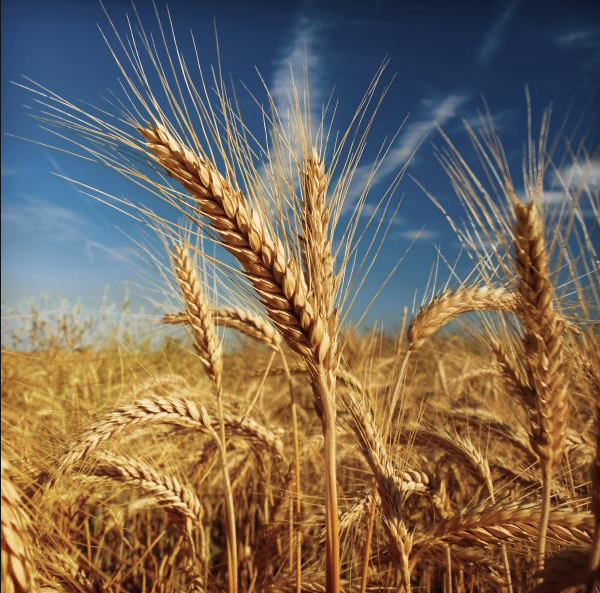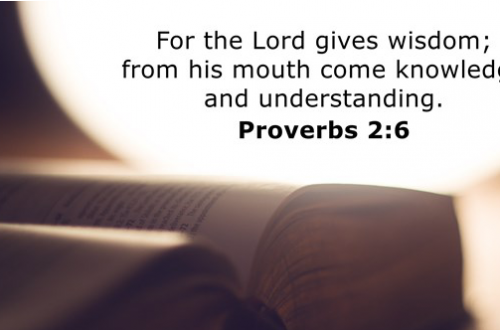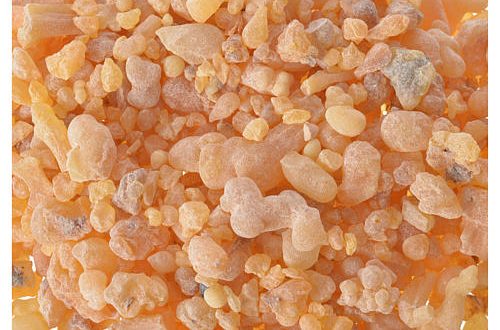
The Fire Sacrifices and Offerings of Israel – The Meal Offering
The Old Covenant Book of Leviticus outlines five special Levitical fire offerings and sacrifices. The Burnt Offering is for the sanctification of the whole man in self-surrender to the Lord, even unto death. The Meal or Grain Offering is the fruit of that sanctification. The Peace Offering is the blossoming of the possession and enjoyment of saving grace. The Sin Offering is for making amends for sin. The Trespass Offering was for the restoration of rights that had been violated.
The New Testament views all the old covenant sacrifices as types of the death of Christ. The five sacrifices bring out different aspects and significance of His one sacrificial death on the cross. Lambs sacrificed every morning and evening were the most typical victim, so Jesus is called ‘the Lamb of God, who takes away the sin of the world’ (John 1:29). Indeed, he died at the time of the evening sacrifice. (3)
The Meal or Grain Offering (Leviticus 2:1-16)
The second Levitical offering is called a Meal or Grain Offering, the only one that was not a blood offering. The Meal Offering is referred to in the Hebrew text as korban minchah, and literally means “to give a present.” Therefore, the basic concept is that of a gift (Genesis 32:13, 18). It was often used in the context of giving a gift to gain the favor of a superior. It was a tribute of a faithful worshipper to a divine overlord. (2)
Again, this is the only bloodless offering. However, it was never offered apart from blood but was normally accompanied by blood (Leviticus 23:9–14. Numbers 15:1–16. Ezra 7:17). Often, the Meal Offering is mentioned in conjunction with the Burnt Offering, as it is very closely associated with the Burnt Offering (Joshua 22:23, 29. Judges 13:19, 23. 1 Kings 8:64. 2 Kings 16:13). Before the Meal Offering was placed upon the Altar, the Burnt Offering was given first. The Meal Offering was then placed upon the Burnt Offering so that the Meal Offering offered by fire always came in contact with blood.
Consequently, there is no ground in the Meal Offering for human boasting as though the offerer were received by God on the grounds of human effort. Again, recognizing the person’s unworthiness is emphasized by the fact that meal offerings must be accompanied by a whole burnt offering.
The Meal Offering was sacrificially offered to God in thanksgiving and then given to the priest for the purpose of ministry. It may have been offered either cooked or uncooked. The basic content of the Meal Offering was wheat beaten into a very fine sifted flour (1). However, unsifted barley (1) flour was used in the offering of the woman accused of adultery (Numbers 5:15). (5,7)
Cakes or Wafers of the Meal Offering
Ten cakes (loaves) or ten wafers were prepared for the Meal Offering except for twelve cakes were prepared for the showbread and twelve “baked cakes” for the High Priest (4),
Cooked Meal Offering
There were four cooking options for the finely sifted wheat flour:
- baked in an oven mixed with olive oil (1) into ring-shaped or perforated unleavened loaves,
- baked in an oven into unleavened wafers smeared with olive oil,
- baked on a flat pan (griddle) mixed with olive oil into an unleavened cracker, crumbled into pieces, and then olive oil poured over the pieces, and
- deep-fried in a pan of olive oil (Leviticus 2:4-10)
There was only one option for the first ripe grain of barley at harvest times during the Feast of First Fruits (1) :
- roasted in fire, soft barley kernels from crushed bits of fresh grain, which is ground, sifted and mixed with olive oil and frankincense (1) placed on it (Leviticus 2:14-16)
The Uncooked Meal Offering
It would be offered as a fine wheat flour along with two items (Leviticus 2:1-3):
- olive oil (poured on), and
- frankincense (placed on) (Leviticus 2:1,15).
Except for the coarse barley meal offerings of a sinner or a woman accused of adultery which had neither (Numbers 5:15), the showbread which required frankincense but not oil, and a meal offering brought with drink offerings that required oil but not frankincense.
Furthermore, two items were never to be added to the Meal Offering that would be offered by fire:
“ ‘No grain offering which you present to the Lord can be made with yeast, for you must not offer up in smoke any yeast or honey as a gift to the Lord. (Leviticus 2:11 NET)
However, leaven was to be used (1) in the:
- Ring-shaped loaves of bread that normally accompanied a Thanksgiving Peace Offering, and
If he presents it on account of thanksgiving, along with the thank offering sacrifice he must present unleavened loaves mixed with olive oil, unleavened wafers smeared with olive oil, and well soaked ring-shaped loaves made of choice wheat flour mixed with olive oil. He must present this grain offering in addition to ring-shaped loaves of leavened bread which regularly accompany the sacrifice of his thanksgiving peace offering. (Leviticus 7:13 NET)
- Two First Fruit (of wheat) Loaves of the Feast of Weeks (i.e., Pentecost)
You can present them to the Lord as an offering of first fruit, but they must not go up to the altar for a soothing aroma. (Leviticus 2:12 NET)
There was one item that was always added to the Meal Offering:
- Salt (1) (from Sodom (XV)) (Leviticus 2:13)
Moreover, you must season every one of your grain offerings with salt; you must not allow the salt of the covenant of your God to be missing from your grain offering—on every one of your grain offerings you must present salt. (Leviticus 2:13 NET)
Individual Meal Offerings
There were nine individual meal offerings, all of them offered upon the Altar, as follows:
- the sinner’s meal-offering that a poor man offered when he was obliged to bring a sin offering but could not afford to offer an animal (Leviticus 5:11–13),
- the meal offering (barley) of a woman suspected of adultery, known as “the meal offering of jealousy” [i.e., a woman accused of adultery],” (Numbers 5:15),
- the meal offering that every priest brought when he first entered the service, which he offered with his own hand and was called “the meal offering of induction,”
- the meal offering that the High Priest offered every day, which was referred to as “Baked Cakes” (Leviticus 6:19–23),
- the meal offering of fine flour brought as a vow or free-will offering (Numbers 15:1–16),
- the meal offering baked on a griddle brought as a vow or a freewill offering,
- the meal offering of the stewing pan brought as a vow or a freewill offering,
- the meal offering baked in an oven brought as a vow or a freewill offering, and
- the meal offering of wafers brought as a vow or a free-will offering. (4)
Congregational Meal Offerings
Three meal offerings were brought by the congregation:
- the Sheaf of Waving (1) [ʿomer] (first barley), which was offered upon the Altar (Leviticus 23:13,18),
- The Showbread (1), which was prepared every week and was NOT offered upon the Altar, were unleavened, and consumed entirely by the priests. (Leviticus 24:5–9) (5)
- the “Two First Fruit (of wheat) Loaves” (1) of the Feast of Weeks (i.e., Pentecost) and referred to as “a meal offering” and were NOT offered upon the Altar and were leavened. (Leviticus 23:15-17; (4)
Required Sacrifices
- None required; however, Meal Offerings were typically associated with other offerings as indicated in the“Sacrifices and Offerings of the Old Covenant” table immediately below:

There were seven sequential steps of the Meal Offering ritual.
- The worshipper would bring his Meal Offering to the Tabernacle.
- The following Meal Offerings were required to be waived (1) at the East end of the Bronze Altar: (a) the meal offering of fine flour, (b) the meal offering prepared in the baking pan, and (c) the meal offering prepared in the frying pan [Leviticus 2:8], and (d) the meal offering of cakes, and (e) the meal offering of wafers, and (f) the meal offering of priests, and (g) the meal offering of an anointed priest, and (h) the meal offering of gentiles, and (i) the meal offering of women accused of adultery, (j) the meal offering of a sinner and (k) the meal offering of the Sheaf of Waving (I,4)
- For all Meal Offerings that were to be burned by fire, the offerer was required to “bring near” the offering to the Bronze Altar on the west side against the point of the southwest horn. (4)
- When presenting a meat offering, the priest first brought it in the golden or silver dish in which it had been prepared and then transferred it to a holy vessel, putting olive oil and frankincense upon it. (6)
- Taking his stand at the south-eastern corner of the altar, he next took the ‘handful’ that was actually to be burnt (except for the induction meal offering, the “Baked Cakes,” and a priest’s meal offering brought because of a sin or as a freewill offering, all which were burned upon the Altar and no Handful was taken from them), put it in another vessel, laid some of the frankincense on it, carried it to the top of the altar, salted it, and then placed it on the fire of the Altar to burn thus providing a sweet-smelling aroma to God. (6)
- The rest of the Meal Offering would be given to the priest to provide sustenance.
- Every meat offering was accompanied by a drink offering of wine (1), poured at the base of the altar. (6)
Typological Meaning
The Meal Offering typifies the perfect humanity of the Messiah.
Barley
Barley (Hordeum distichon). A cereal grass bearing bearded flower spikes and edible seeds. The common barley, Hordeum distichon, the winter barley, H. hexastichon, and the spring barley, H. vulgare, have been cultivated in temperate regions of the world since time immemorial and today still constitute one of the principal grain foods of man. (2) It is referred to under the Hebrew name of seorah or shoreh, and under the Greek name of krithe. It is the Hordeum distichon of botanists, and belongs to the natural order Gramineæ, the Grass family. It is mentioned along with common and spelt wheat. Oats and rye, being northern plants, did not grow in Israel. (4) Barley is a cereal plant with grain having a nutlike flavor and is high in carbohydrates, with moderate quantities of protein, calcium, and phosphorus and small amounts of B vitamins. (5)
Barley is sown anytime between November and March. The green ears are boiled and served with milk forming a dish frequently eaten in Egypt. The barley harvest takes place in March or April in Israel, depending on the locality. Barley matures faster and produces more prolifically than wheat. It ripens about a month earlier than wheat in Egypt. (2) The hail plague in Egypt destroyed the barley crop because it had ripened; at the same time, wheat and rye had not matured (Exodus 9:31, 32).
Barley is adaptable to a greater range of climates than any other cereal, with varieties suited to temperate, sub-Arctic, or subtropical areas. Although it does best in growing seasons of at least 90 days, it can grow and ripen in a shorter time than any other cereal. Barley has a greater resistance to dry heat than other small grains and thrives in the near-desert areas of North Africa, where it is mainly sown in the autumn. Spring-sown crops are especially successful in the cooler, moist areas of western Europe and North America. (5)

Barley produced a crop even in times of famine (Ruth 1:22; 2:17, 23; 3:2, 15, 17) and sold cheaper than wheat (2 Kings 7:1, 16) Barley on the stalk carries a larger husk with long wiry hair (thus the name in Hebrew means “long hair”) making chaff separation more difficult. The greater likelihood of extraneous matter in the flour combined with the less-liked flavor made barley cheaper. (3)
Barley and wheat were the two staple cereal crops of Egypt and the Holy Land. Barley being less expensive, was mostly used for feeding cattle, although it was also used by itself or mixed with wheat and other seed as food for man (Ezekiel 4:9–12). Barley is mentioned in the Bible 32 times, either as a plant growing in the fields or as products made from it, such as barley meal, barley bread, barley cakes, and barley loaves. (2)
Barley was so well known in ancient times that it supplied a unit of linear measure, 2 barleycorns making a “finger breadth,” 16 “a handbreadth,” 24 a “span,” and 48 a “cubit.” (2)
Barley Represents Spring
“As the first grain to ripen, barley symbolized spring (Ruth 1:22).
The first omer of barley was reaped on the [Sunday after Passover (1), which was the Feast of Firstfruits (1)], marking the beginning of the spring harvest season (Leviticus. 23:9–15).
The end of the barley harvest (and the beginning of the wheat harvest) is associated with the festival of Shavuot [Feast of Weeks or Pentecost (1)] when the Book of Ruth (which takes place during the barley harvest) is read in the synagogue. (VI)
Barley Represents the Poor
As the common food of the poor, barley was also regarded as a symbol of poverty and cheapness or worthlessness (Hosea 3:2). This also explains the use of a small amount of barley meal instead of wheat meal in the jealousy offerings described in Numbers 5:15, indicating to the people the low regard in which the implicated parties were held. It explains the force of the exclamation of shocked insult in Ezekiel 13:19. Present-day bedouins refer to their enemies as “cakes of barley bread” to indicate their utter scorn for them. This helps us interpret the dream of Gideon in Judges 7:13–15: Gideon was a very poor and humble man of the type who would most certainly have been scornfully referred to as a “cake of barley bread” by the haughty Midianites. (2)
Since barley was the staple of the lower classes, failure of the barley harvest or absurdly high prices for barley served as a judgment oracle against the nation (Job 31:40; Revelations 6:6) (6)
It was, and is, grown chiefly as provender for horses and asses (1 Kings 4:28), oats being practically unknown, but it was, as it now is, to some extent, the food of the poor in country districts (Ruth 2:17; 2 Kings 4:42; John 6:9, 13)”. (IV)
“Barley bread was served as food for the common people; and the loaves which were miraculously distributed to the multitude by our Lord were made of barley (John 6:9, 13).” (V)
“Here is a boy who has five barley loaves and two fish, but what good are these for so many people?” (John 6:9 NET)
Barley Represents Jesus
Since Barley was the Firstfruit of the Feast of Firstfruits (1) it typologically represented that Jesus, our Firstfruit, would come from poor common people.
But now Christ has been raised from the dead, the firstfruits of those who have fallen asleep. For since death came through a man, the resurrection of the dead also came through a man. For just as in Adam all die, so also in Christ all will be made alive. But each in his own order: Christ, the firstfruits; then when Christ comes, those who belong to him. (1 Corinthians 15:20-23 NET)
Think about the circumstances of your call, brothers and sisters. Not many were wise by human standards, not many were powerful, not many were born to a privileged position. But God chose what the world thinks foolish to shame the wise, and God chose what the world thinks weak to shame the strong. God chose what is low and despised in the world, what is regarded as nothing, to set aside what is regarded as something, so that no one can boast in his presence. (1 Corinthians 1:26–29 NET)
Listen, my dear brothers and sisters! Did not God choose the poor in the world to be rich in faith and heirs of the kingdom that he promised to those who love him? (James 2:5 NET)
The LORD spoke to Moses: “Tell the Israelites, ‘When a woman produces offspring and bears a male child, she will be unclean seven days, as she is unclean during the days of her menstruation. On the eighth day the flesh of his foreskin must be circumcised. Then she will remain thirty-three days in blood purity. She must not touch anything holy and she must not enter the sanctuary until the days of her purification are fulfilled. If she bears a female child, she will be impure fourteen days as during her menstrual flow, and she will remain sixty-six days in blood purity. “ ‘When the days of her purification are completed for a son or for a daughter, she must bring a one year old lamb for a burnt offering and a young pigeon or turtledove for a sin offering to the entrance of the Meeting Tent, to the priest. The priest is to present it before the LORD and make atonement on her behalf, and she will be clean from her flow of blood. This is the law of the one who bears a child, for the male or the female child. If she cannot afford a sheep, then she must take two turtledoves or two young pigeons, one for a burnt offering and one for a sin offering, and the priest is to make atonement on her behalf, and she will be clean.’ ” (Leviticus 12:1–8 NET)
Now when the time came for their purification according to the law of Moses, Joseph and Mary brought Jesus up to Jerusalem to present him to the Lord (just as it is written in the law of the Lord, “Every firstborn male will be set apart to the Lord”), and to offer a sacrifice according to what is specified in the law of the Lord, a pair of doves or two young pigeons. (Luke 2:22–24 NET)
Barley Represents the Israelites
Barley also represents the people of Israel, the Jews. God did not favor them and chose this people group to be His people because they were the largest, most prestigious nation. Israel, like barley compared to wheat, was the smallest nation. However, it was Jews that were the first to respond to His call, the first fruits (i.e., the first to be born again (Acts 2:1-47).
For you are a people holy to the Lord your God. He has chosen you to be his people, prized above all others on the face of the earth. It is not because you were more numerous than all the other peoples that the Lord favored and chose you—for in fact you were the least numerous of all peoples. Rather it is because of his love for you and his faithfulness to the promise he solemnly vowed to your ancestors that the Lord brought you out with great power, redeeming you from the place of slavery, from the power of Pharaoh king of Egypt. So realize that the Lord your God is the true God, the faithful God who keeps covenant faithfully with those who love him and keep his commandments, to a thousand generations, but who pays back those who hate him as they deserve and destroys them. He will not ignore those who hate him but will repay them as they deserve! So keep the commandments, statutes, and ordinances that I today am commanding you to do. (Deuteronomy 7:6–11 NET)
Israel was a small group of people without great culture or prestige. They possessed no unique personal qualities which would warrant such a choice. The election was an act of God alone. The ultimate cause for that choice lay in the mystery of divine love. (XVII)
You did not choose me, but I chose you and appointed you to go and bear fruit, fruit that remains, so that whatever you ask the Father in my name he will give you. This I command you—to love one another. (John 15:16–17 NET)
Sacrifices and Offerings of the Old Covenant Series:
- The Fire Sacrifices and Offerings of Israel – Introduction
- The Fire Sacrifices and Offerings of Israel – The “Whole” Burnt Offering
- The Fire Sacrifices and Offerings of Israel – The Meal Offering
- The Fire Sacrifices and Offerings of Israel – The Peace Offering
- The Fire Sacrifices and Offerings of Israel – The Sin Offering
- The Fire Sacrifices and Offerings of Israel – The Trespass Offering
- The Fire Sacrifices and Offerings of Israel – The Red Heifer Offering
- The Fire Sacrifices and Offerings of Israel – The Ordination Offering
Biblical Typologies, Metaphors, & Similes Series:
- The Old Leaven of the Kingdom of Darkness
- The New Leaven of the Kingdom of Heaven
- Wine
- Water
- Finely Sifted (Wheat) Flour
- Frankincense
- Myrrh
- Anointing Oil
- Olive Oil
- Honey
- Salt
- Waving and Heaving
- Barley
- Gold
- Silver
- Bronze
- Stone
- Wood
- Linen
- Iron
- Shofar and Trumpet
Shalom
(Security, Wholeness, Success)
Peace
Then he said to them, “Therefore every expert in the law who has been trained for the kingdom of heaven is like the owner of a house who brings out of his treasure what is new and old.” (Matthew 13:52 NET)
(1) Select the link to open another article with additional information in a new tab.
(2) This article has been primarily adapted from: Fruchtenbaum, A. G. (1983). The Messianic Bible Study Collection (Vol. 180, p. 16). Tustin, CA: Ariel Ministries.
(3) Wenham, G. J. (1981). Numbers: an introduction and commentary (Vol. 4, p. 220). Downers Grove, IL: InterVarsity Press.
(4) Neusner, J. (2007). A History of the Mishnaic Law of Holy Things: Menahot: Translation and Explanation. (J. Neusner, Ed.) (Vol. 2, p. 1). Eugene, OR: Wipf & Stock Publishers.
(5) Neusner, J. (2011). The Babylonian Talmud: A Translation and Commentary (Vol. 19, pp. vii–viii). Peabody, MA: Hendrickson Publishers.
(6) Edersheim, A. (1959). The Temple, its ministry and services as they were at the time of Jesus Christ. (p. 138). London: James Clarke & Co.
(I) Neusner, J. (1988). The Mishnah : A new translation (p. 742). New Haven, CT: Yale University Press.
(II) Malda, B. D. (Ed.). (2015). Come and Worship: Ways to Worship from the Hebrew Scriptures (p. 62). Clarksville, MD: Lederer Books: a division of Messianic Jewish Publishers.
(III) Sklar, J. (2013). Leviticus: An Introduction and Commentary. (D. G. Firth, Ed.) (Vol. 3, p. 101). Nottingham, England: Inter-Varsity Press.
(IV) Masterman, E. W. G. (1915). Barley. In J. Orr, J. L. Nuelsen, E. Y. Mullins, & M. O. Evans (Eds.), The International Standard Bible Encyclopaedia (Vol. 1–5, p. 405). Chicago: The Howard-Severance Company.
(V) Balfour, J. H. (1885). The Plants of the Bible (p. 212). London; Edinburgh; New York: T. Nelson and Sons.
(VI) Eisenberg, R. L. (2004). The JPS guide to Jewish traditions (1st ed., p. 670). Philadelphia: The Jewish Publication Society.
(VII) Hannah, J. D. (1985). Exodus. In J. F. Walvoord & R. B. Zuck (Eds.), The Bible Knowledge Commentary: An Exposition of the Scriptures (Vol. 1, p. 153). Wheaton, IL: Victor Books.
(VIII) Easton, M. G. (1893). In Easton’s Bible dictionary. New York: Harper & Brothers.
(IX) Singer, I. (Ed.). (1901–1906). In The Jewish Encyclopedia: A Descriptive Record of the History, Religion, Literature, and Customs of the Jewish People from the Earliest Times to the Present Day, 12 Volumes (Vol. 9, p. 568). New York; London: Funk & Wagnalls.
(X) Hamilton, M. W. (2000). Elevation Offering. In D. N. Freedman, A. C. Myers, & A. B. Beck (Eds.), Eerdmans dictionary of the Bible (p. 392). Grand Rapids, MI: W.B. Eerdmans.
(XI) (2016). The Lexham Figurative Language of the New Testament Dataset. In J. R. Westbury, J. Thompson, K. A. Lyle, & J. Parks (Eds.), Lexham Figurative Language of the Bible Glossary. Bellingham, WA: Lexham Press.
(XII) Larson, K. (2000). I & II Thessalonians, I & II Timothy, Titus, Philemon (Vol. 9, p. 331). Nashville, TN: Broadman & Holman Publishers.
(XIII) Lindsey, F. D. (1985). Leviticus. In J. F. Walvoord & R. B. Zuck (Eds.), The Bible Knowledge Commentary: An Exposition of the Scriptures (Vol. 1, p. 177). Wheaton, IL: Victor Books.
(XIV) Neusner, J. (2011). The Babylonian Talmud: A Translation and Commentary (Vol. 19, p. 617). Peabody, MA: Hendrickson Publishers.
(XV) Freeman, J. M., & Chadwick, H. J. (1998). Manners & customs of the Bible (p. 143). North Brunswick, NJ: Bridge-Logos Publishers.
(XVI) Wuest, K. S. (1961). The New Testament: an expanded translation (1 Co 5:6–8). Grand Rapids, MI: Eerdmans.
(XVII) Thompson, J. A. (1974). Deuteronomy: An Introduction and Commentary (Vol. 5, p. 147). Downers Grove, IL: InterVarsity Press.
(XVIII) Keach, B. (1858). An Exposition of the Parables and Express Similitudes of Our Lord and Saviour Jesus Christ(pp. 239–240). London: Aylott and Co.
(XIX) Beis Hamikdash Topics – Tour of the Temple: Class 10, The Altar
(XX) C. S. Lewis, Miracles (New York: HarperCollins, 1974), pp. 236–37.
(XXI) Hall, K. D. (2000). Libation. In D. N. Freedman, A. C. Myers, & A. B. Beck (Eds.), Eerdmans dictionary of the Bible (p. 807). Grand Rapids, MI: W.B. Eerdmans.
(XXII) Rogers, A. (2017). Back to Bethel. In Adrian Rogers Sermon Archive (Ge 35). Signal Hill, CA: Rogers Family Trust.
(XXIII) Ryrie, C. C. (1999). Basic Theology: A Popular Systematic Guide to Understanding Biblical Truth (p. 341). Moody Press.
Propitiation, as we have seen, means the placating or satisfying of the personal wrath of God. Expiation is the removal of impersonal wrath, sin, or guilt. Expiation has to do with reparation for a wrong; propitiation carries the added idea of appeasing an offended person and thus brings into the picture the question of why the offended person was offended. In other words, propitiation brings the wrath of God into the picture, while expiation can leave it out.




